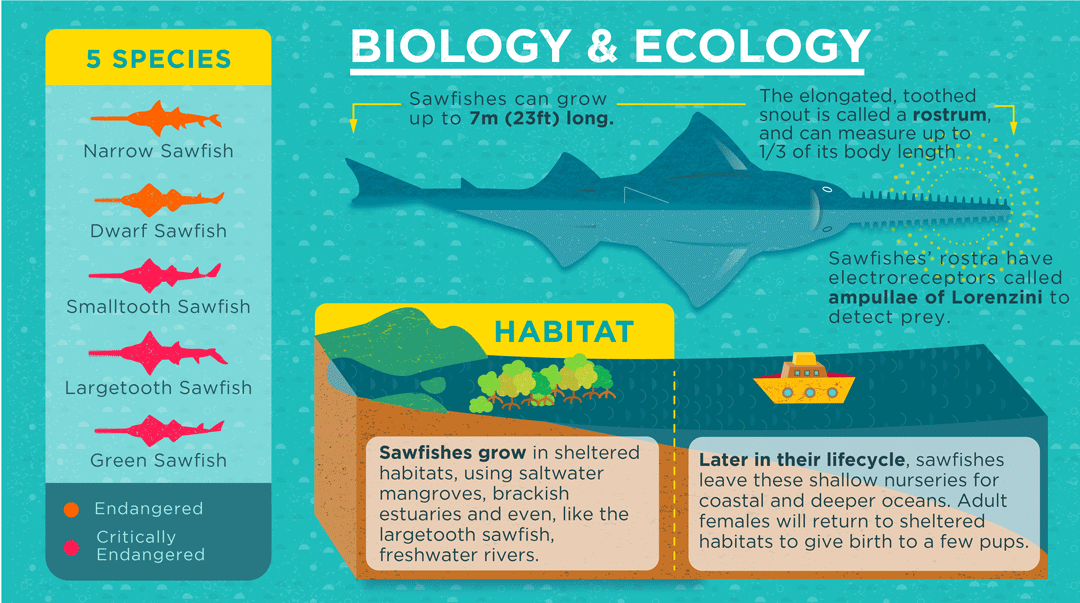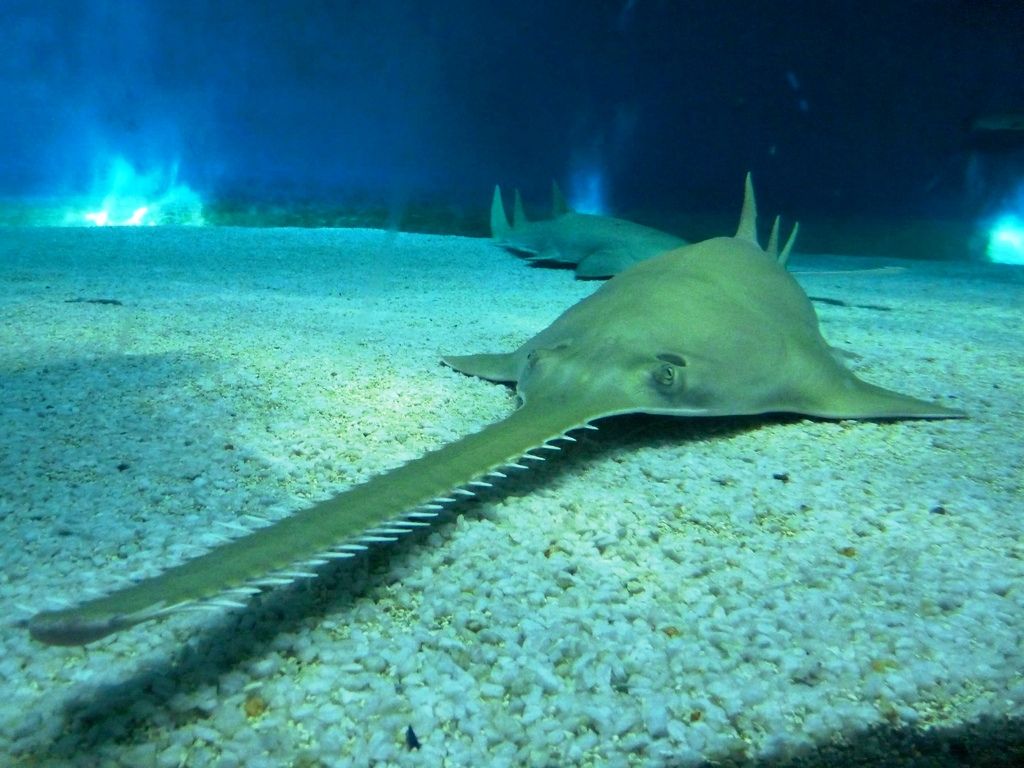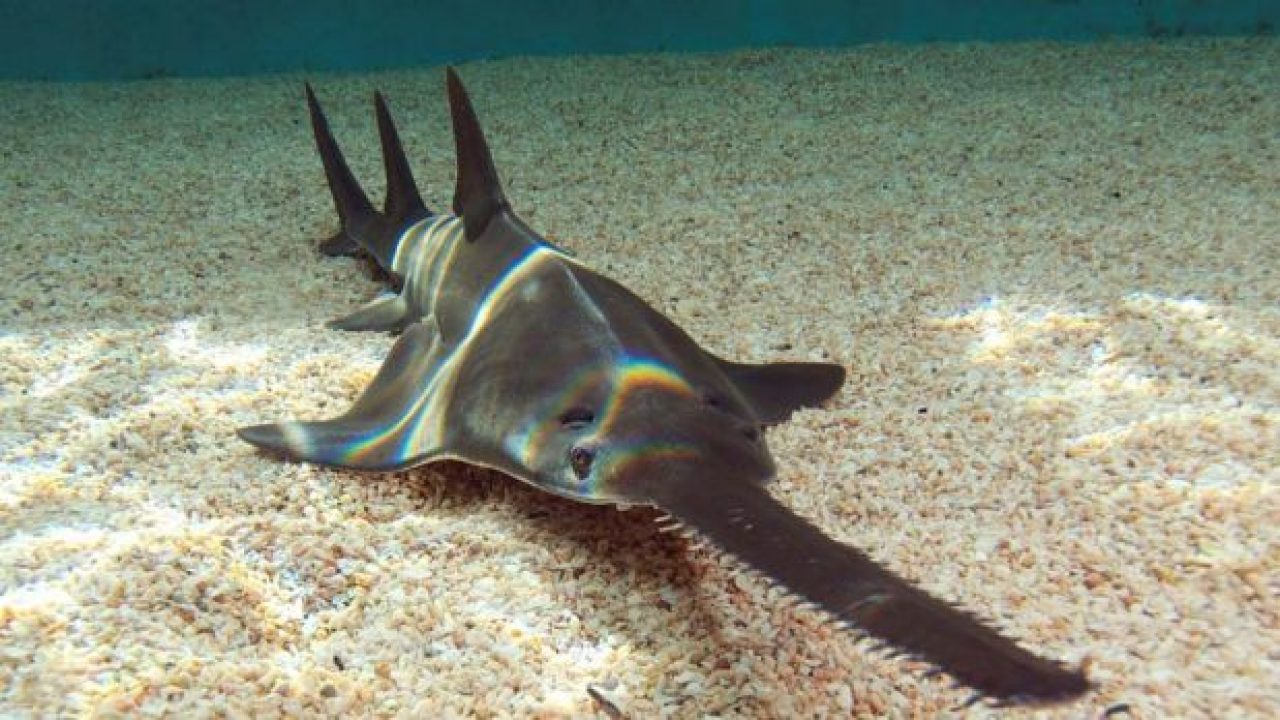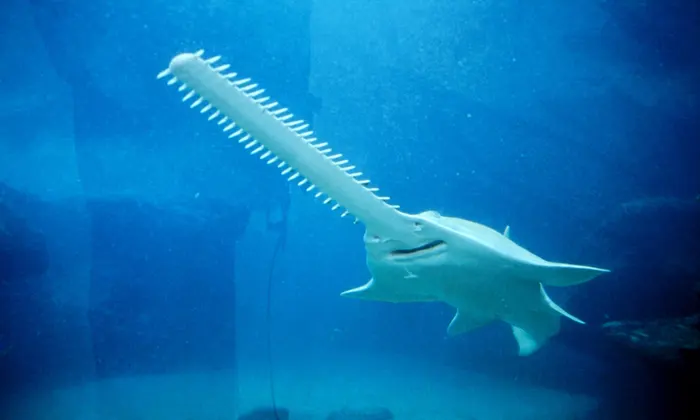STATUS
Threatended


Sawfish are part of the Rajiformes order-a group of flattened marine fish that include rays and skates-and are closely related to sharks. Two species of sawfish are found in U.S. waters: the wide or smalltooth sawfish (Pristis pectinata) and the largetooth sawfish (Pristis perotteti). Unlike the rest of the cartilaginous fishes, sawfish have evolved a long snout edged with special teeth. The sawlike snout, called a rostrum, can be used in a back-and-forth swiping motion to cut prey in half or to dig through the sediment. The largetooth sawfish can grow up to 23 feet (7 meters). A smalltooth sawfish averages 18 feet (5.5 meters) in length and may reach 25 feet (7.6 meters).
The smalltooth sawfish is federally listed as endangered. Sawfish populations are likely declining due to overharvesting and entanglement in fishing gear, as their long, toothed rostrums become very easily entangled with fishing line and nets. The saws are dried and sold as trinkets in some cultures. Additionally, loss of mangrove forests and other nursery habitats in the Southeast for conversion to beachfront development contributes to the decline of sawfish. Recovery efforts are in effect to guide fishermen in the safe release of sawfish that are mistakenly caught. The establishment of marine protected areas and the banning of entangling fishing gear in Florida waters have helped to slow the decline of sawfish.

STATUS
Threatended

SCIENTIFIC NAME
Pristidae

POPULATION
less than 5,000 adults left

LENGTH
up to 23 feet (7 meters)

WEIGHT
500-600 kg

HABITAT
UNDERWATER

Sawfish are a vital part of the marine ecosystem; they move around sediment and unearth smaller organisms which makes it easier for other animals to find prey. Sawfish also have a cultural importance to many native societies as symbols of protection, religion, prosperity, and warfare.
Sawfishes majorly consist of smalltooth and largetooth groups; these fishes have a life span ranging from about 30-50 years, depending on species. A Green Sawfish, in particular, can live for 35 years, while a Smalltooth Sawfish can live for over 42 years.
Sawfish, although they lack a swim bladder, use their fins, and they swim at a speed of 0.98 mph.
Like many toothed fish, sawfish can replace their teeth if they are worn down or lost. This phenomenon is called polyphyodonty.
Sawfish is not a treat for humans. However, take care while approaching a sawfish especially if they are entangled in a fishing net. They could attack or kill humans while defending themselves with their rostrum if they feel threatened, especially a largetooth sawfish.




